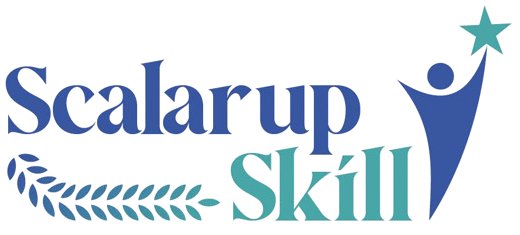Mean Stack

What is Mean Stack?
Full Stack Web Development refers to the development of both Front-end(Client-side) and Back-end(Server-side) of Web application.
Who is a full-stack developer?
A full stack developer is a person who is comfortable with all the levels of the web development, which includes data modeling, business logic, API, MVC, user experience, user interface, knowing the needs of customers, business enterprise and much more.
Mean Stack Course Curriculum
Module 1: Introduction to Full-Stack Development
- Overview of Full-Stack Development
- Role and Responsibilities of a Full-Stack Developer
- Course Structure and Learning Path
Module 2: HTML5
Lesson 1: Introduction
- Overview of HTML5
- UI Developer Roles and Responsibilities
- UX Designer Roles
- Technologies Needed for UI Development
- Power of UI
- Current Market Requirements for UI
Lesson 2: Basic Technologies Needed
- Difference Between Front-End and Back-End
- Sample Web Pages
- Crawling and Meta Tags
Lesson 3: Basic HTML
- Exploring Existing Pages
- Browsers & Editors
- DOM
- Structure of an HTML Page
- Mandatory Tags (html, head, body)
- Heading Tags (H1…H6)
- Tags and Attributes (Class, Id, style, etc.)
- Inline and Block Level Elements
- More HTML Tags
- Including External Page Links Using Anchor Tags
- Working with Row and Column Data Using Table Tags
- Hiding and Un-hiding Elements Using Display Property
- img, p, ul, ol, li, hr Tags
- Layouts, Forms, Buttons
- Input Fields (textbox, radio button, checkbox, dropdown, text area, etc.)
- Debugging HTML & CSS (Firebug, IE, and Chrome Developer Tools)
- Creating Tabs and Menu Lists
Lesson 4: HTML5 Features
- Geolocation
- Video Tag
- Audio Tag
- SVG
- Form Elements
- Get & Post Communication
- Validating Input Values in a Form
- Form Action and Type
Module 3: CSS
- Basics of CSS
- CSS3 Features
- Selectors and Combinators
- Box Model
- Flexbox and Grid Layout
- Responsive Design
- Animations and Transitions
- Positioning and Display
- Media Queries
- CSS Variables
Module 4: Bootstrap
- Introduction to Bootstrap
- Bootstrap Grid System
- Bootstrap Components (Navbar, Forms, Buttons, Cards, Modals, etc.)
- Customizing Bootstrap
- Responsive Design with Bootstrap
Module 5: JavaScript
- JavaScript Basics
- ES6 Features
- Data Types and Variables
- Operators and Expressions
- Control Structures
- Functions
- Arrays and Objects
- DOM Manipulation
- Event Handling
- Asynchronous Programming (Callbacks, Promises, Async/Await)
- Error Handling
Module 6: React.js/Redux
Lesson 1: Introduction to React
- Environment Setup for React
- Introduction to JSX
- Introduction to React DOM
- Creating the First React Application
Lesson 2: React Basics
- React Elements
- React Components (Class-Based and Function-Based)
- Component Lifecycle
- Rendering Elements
- State Management in React
- Introduction to Props
- Working with Props
- Binding Data in React
- Refs in React
- Lists and Keys
- Forms
- Component Styling in React
Module 7: Node.js
- Introduction to Node.js
- Setting up Node.js Environment
- Understanding Node.js Architecture
- Node.js Modules
- File System and Events
- Asynchronous Programming with Callbacks, Promises, and Async/Await
Module 8: Express.js
- Introduction to Express.js
- Setting up Express Application
- Middleware in Express
- Building RESTful APIs
- Creating Routes and Controllers
- Handling HTTP Methods
- Middleware for Validation and Authentication
Module 9: MongoDB & Mongoose
Lesson 1: Introduction to MongoDB
- Basics of NoSQL Databases
- Introduction to MongoDB
- Installing MongoDB
- MongoDB Shell and CRUD Operations
- MongoDB Compass
Lesson 2: Mongoose with Node.js
- Introduction to Mongoose
- Setting Up Mongoose
- Defining Schemas and Models
- Advanced Mongoose Features
- Schema Validation
- Middleware and Query Helpers
- Population and Aggregation
Module 10: Connecting Front-End and Back-End
- Setting Up Angular with Node.js
- Making HTTP Requests from Angular
- Connecting Angular Front-End with Node.js Back-End
- Implementing JWT Authentication
- Protecting Routes in Angular and Express
Module 11: Advanced Topics
- Real-Time Features with Socket.io
- Setting Up Socket.io on Server and Client
- Implementing Real-Time Communication
- Error Handling and Logging
- Error Handling Strategies in Express
- Logging with Morgan and Winston
Module 12: Deployment
- Docker and Containerization
- Docker Basics
- Creating Docker Containers for Node.js and Angular Applications
- Deploying to Cloud Platforms
- Deploying to Heroku, AWS, or Azure
- CI/CD Pipelines with GitHub Actions or Jenkins
Module 13: Capstone Project
- Project Planning and Implementation
- Developing a Full-Stack Application Using MEAN Stack
Module 14: Final Assessment
- Course Review and Q&A
- Final Examination
- Certification and Career Guidance

